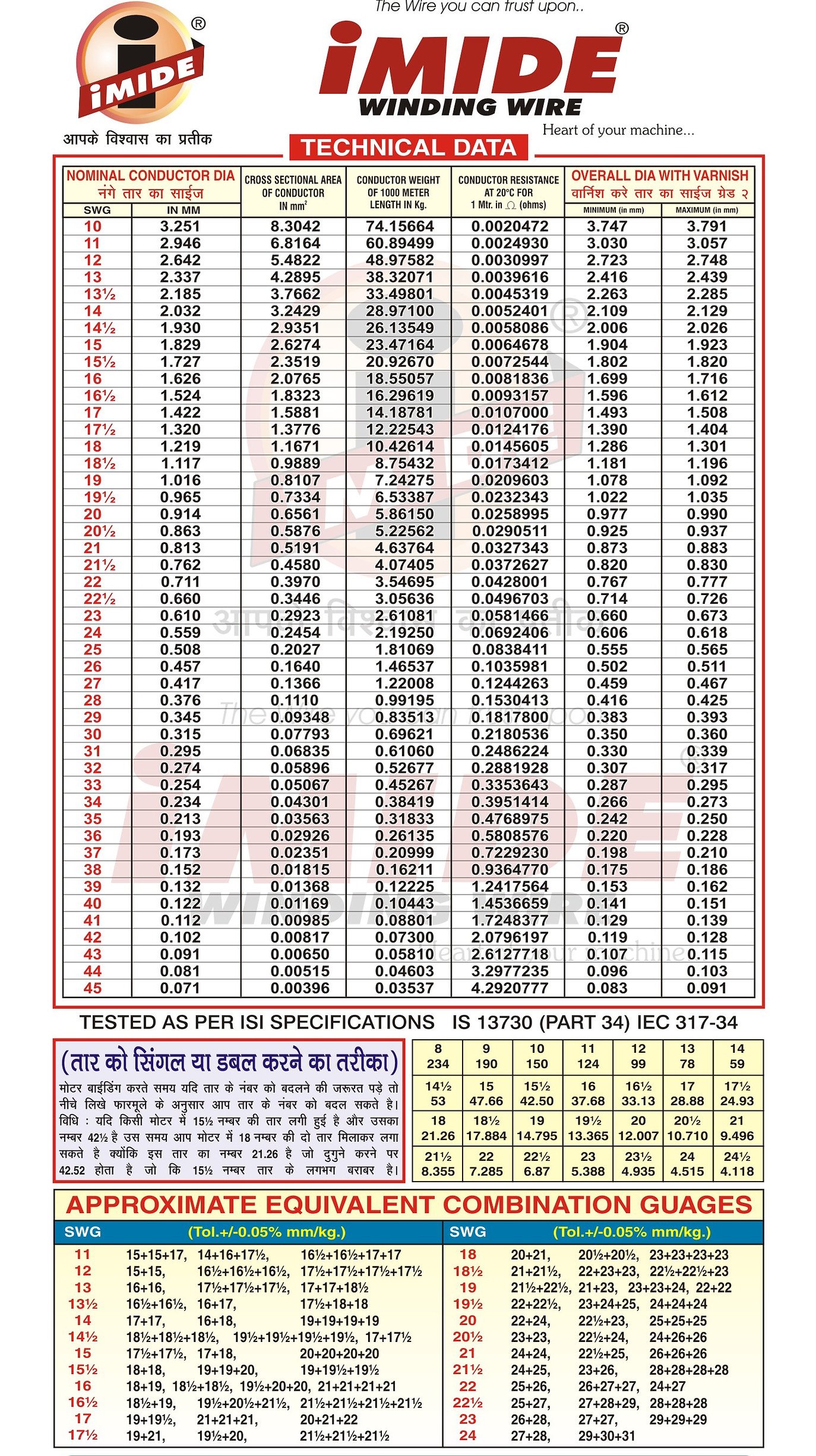Motor winding data chart | For Motor Winding Analysis
The field of motor winding analysis plays a crucial role in understanding the intricate workings of electric motors, ensuring their optimal performance, efficiency, and longevity. At the heart of this analysis lies the motor winding data chart, a comprehensive tool that offers valuable insights into the motor’s operational characteristics.
A motor winding data chart serves as a visual representation of the electrical and mechanical properties of a motor’s winding system. It provides a comprehensive overview of various parameters such as wire gauge, number of turns, winding arrangement, and insulation materials used. Engineers and technicians rely on this chart to analyze and fine-tune motor designs, diagnose potential issues, and optimize the motor’s efficiency.
In this topic, we delve into the components that constitute a motor winding data chart and its significance within the realm of motor engineering. We explore how different winding configurations impact the motor’s torque, speed, and power output, and how the choice of materials influences the motor’s thermal performance and overall reliability.
Furthermore, we discuss the intricacies of interpreting the data chart, including the identification of potential faults such as short circuits, open circuits, or phase imbalances. By utilizing advanced techniques and technologies, professionals can perform in-depth motor winding analysis to diagnose problems early, prevent breakdowns, and enhance operational safety.
Whether you’re an engineering enthusiast, a student, or a professional in the field, understanding motor winding data charts and their role in motor analysis is essential. This topic provides a comprehensive exploration of this critical aspect of motor technology, shedding light on the complexities that drive the world of electric motors.
MOTOR WINDING DATA CHART

DOWNLOD & SAVE YUOR PHONE (THANKS FOR VISITING se-solution.in)
Motor winding is an essential part of electrical designing, assuming a urgent part in the activity of different electric machines, from little domestic devices to enormous modern motors. Understanding various kinds of motor winding information is fundamental for planning effective and solid electrical frameworks. In this far reaching guide, we’ll dig into the universe of motor winding information, investigating different sorts and their applications.
**Types of Motor Windings AND MOTOR WINDING DATA**
a. **Single-Stage Motor Windings**: Single-stage motors are regularly tracked down in domestic devices and little apparatus. We’ll talk about the rudiments of single-stage winding information, including its development and applications.
b. **Three-Stage Motor Windings**: Three-stage motors are broadly utilized in modern applications. We’ll investigate the intricacies of three-stage winding information, including delta and star designs.
c. **AC and DC Motor Windings**: AC and DC motors have unmistakable winding information necessities. We’ll think about the two and feature the vital contrasts in winding plan.
2. **Winding Arrangements**
a. **Lap Winding**: We’ll dive into lap winding, a typical winding strategy utilized in DC motors, and make sense of its benefits and constraints.
b. **Wave Winding**: Investigate wave winding, one more winding plan utilized in DC motors, and comprehend how it varies from lap winding.
c. **Concentric Winding**: Find out about concentric winding, which is in many cases utilized in transformers and what it means for the presentation of such gadgets.
3. **Factors Influencing Motor Winding Data**
a. **Wire Check and Material**: Talk about the meaning of wire measure and material determination in motor winding and what they mean for electrical conductivity and intensity dispersal.
b. **Turns and Coils**: Investigate the idea of turns and loops in motor winding information, and comprehend how they decide the motor’s attributes.
c. **Insulation and Cooling**: Feature the significance of appropriate protection and cooling strategies in motor twisting to forestall overheating and guarantee long haul unwavering quality.
4. **Testing and Troubleshooting**
a. **Winding Opposition Testing**: Find out about winding obstruction testing, a vital stage in motor support, and how it distinguishes possible issues.
b. **Common Winding Faults**: Find normal winding issues like open circuits, shortcircuits, and fractional twisting disappointments, alongside investigating procedures.
5. **Advanced Motor Winding Data**
a. **Fractional Opening Winding**: Investigate the idea of fragmentary space winding and how it upgrades the presentation of specific motors, for example, brushless DC motors.
b. **Winding Reproduction and Optimization**: Comprehend how current innovation takes into consideration progressed winding recreations and improvement methods, prompting more proficient motor plans.
6. **Conclusion**
All in all, motor winding information is a huge and multifaceted field, critical for the activity of electric machines. Whether you’re an electrical designer, specialist, or essentially inquisitive about the internal operations of motors, understanding the different kinds of motor winding information is a significant resource. With this far reaching guide, you’re presently prepared to explore the universe of motor winding and pursue informed choices for your electrical ventures.
FOR MORE ELECTRICAL KNOWLEDGE PLEASE VISIT TO OUR YOUTUBE CHANNEL SE SOLUTION BY YOUR SUPPORT WE REACHED 4 LAKH+ SUBSCRIBERS

AND FOR MORE WINDING DATA YOU CAN SEARCH IT HERE ON OUR WEBSITE
I HOPE YOU LIKED THE WEBSITE


Join chenal
Dhanyvad sar aapke video se bahut kuchh sikhane Ko milta hai aise hi video dalte Raha karo